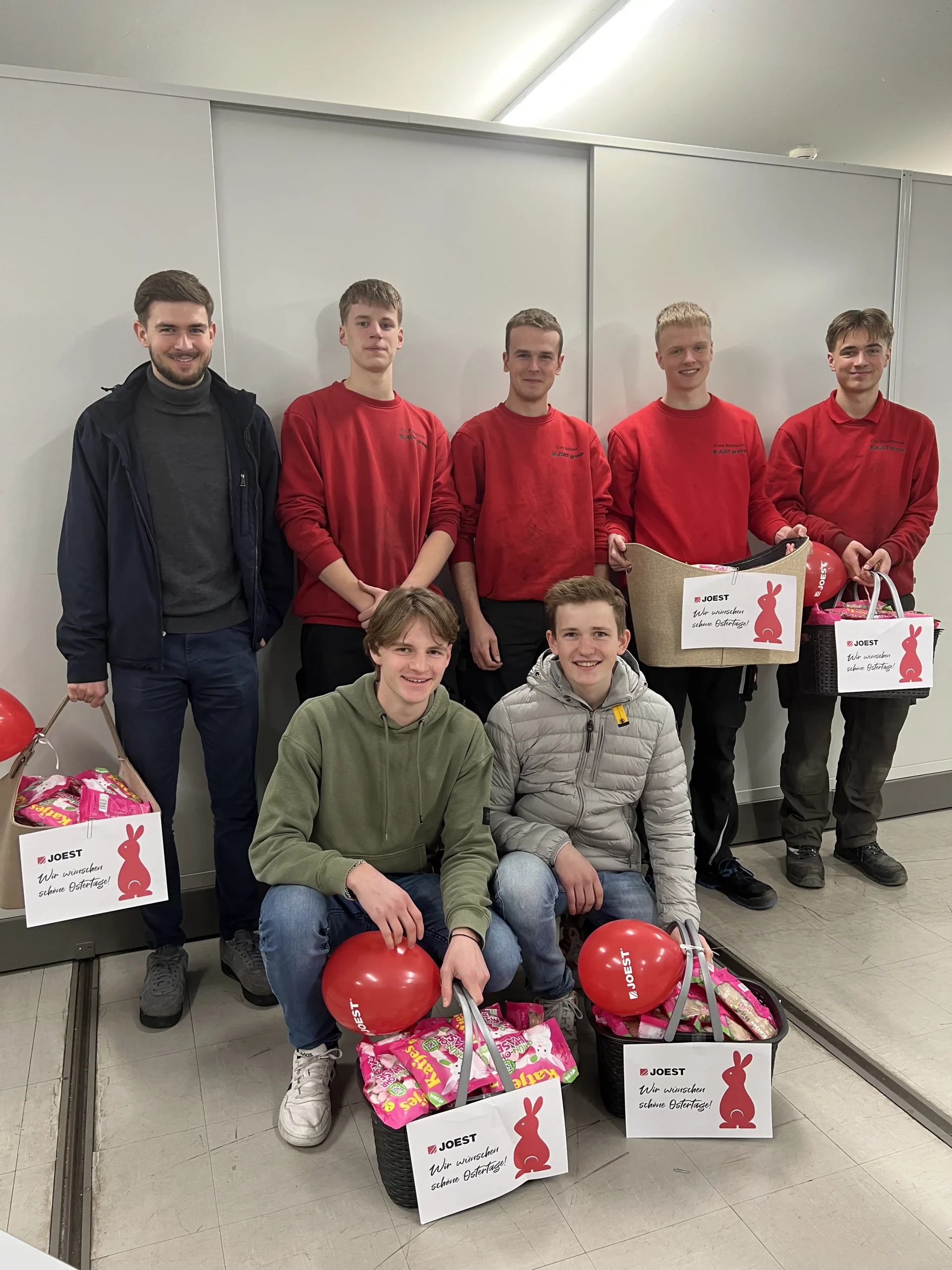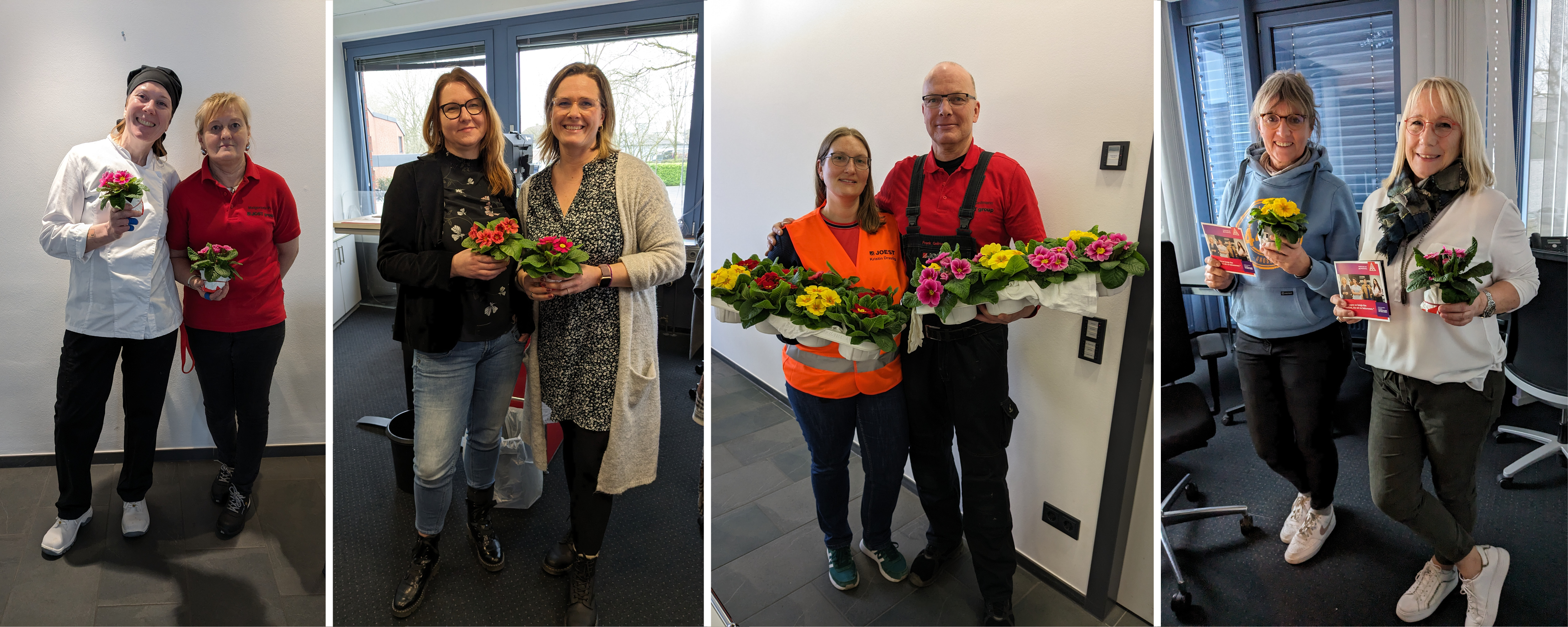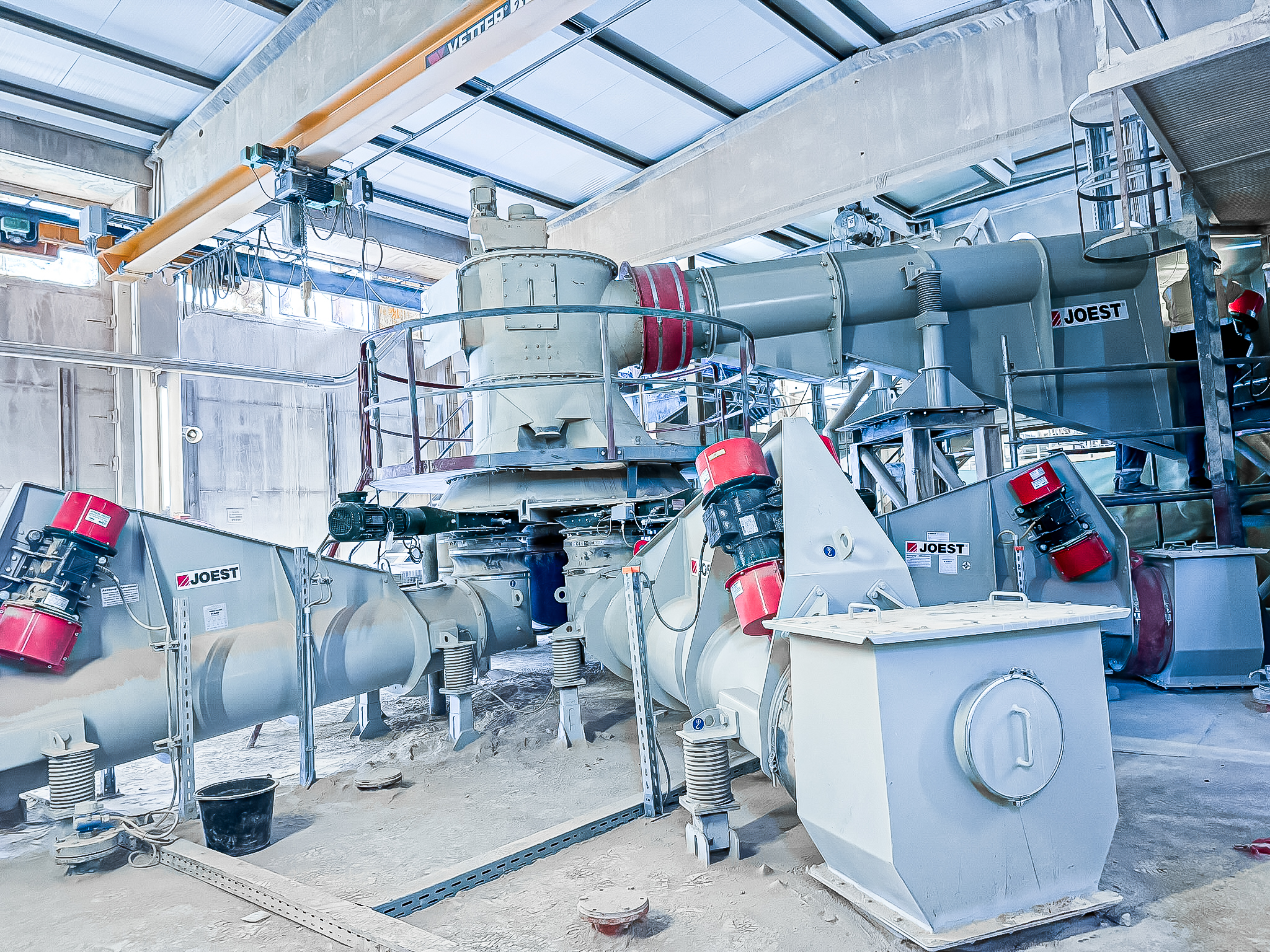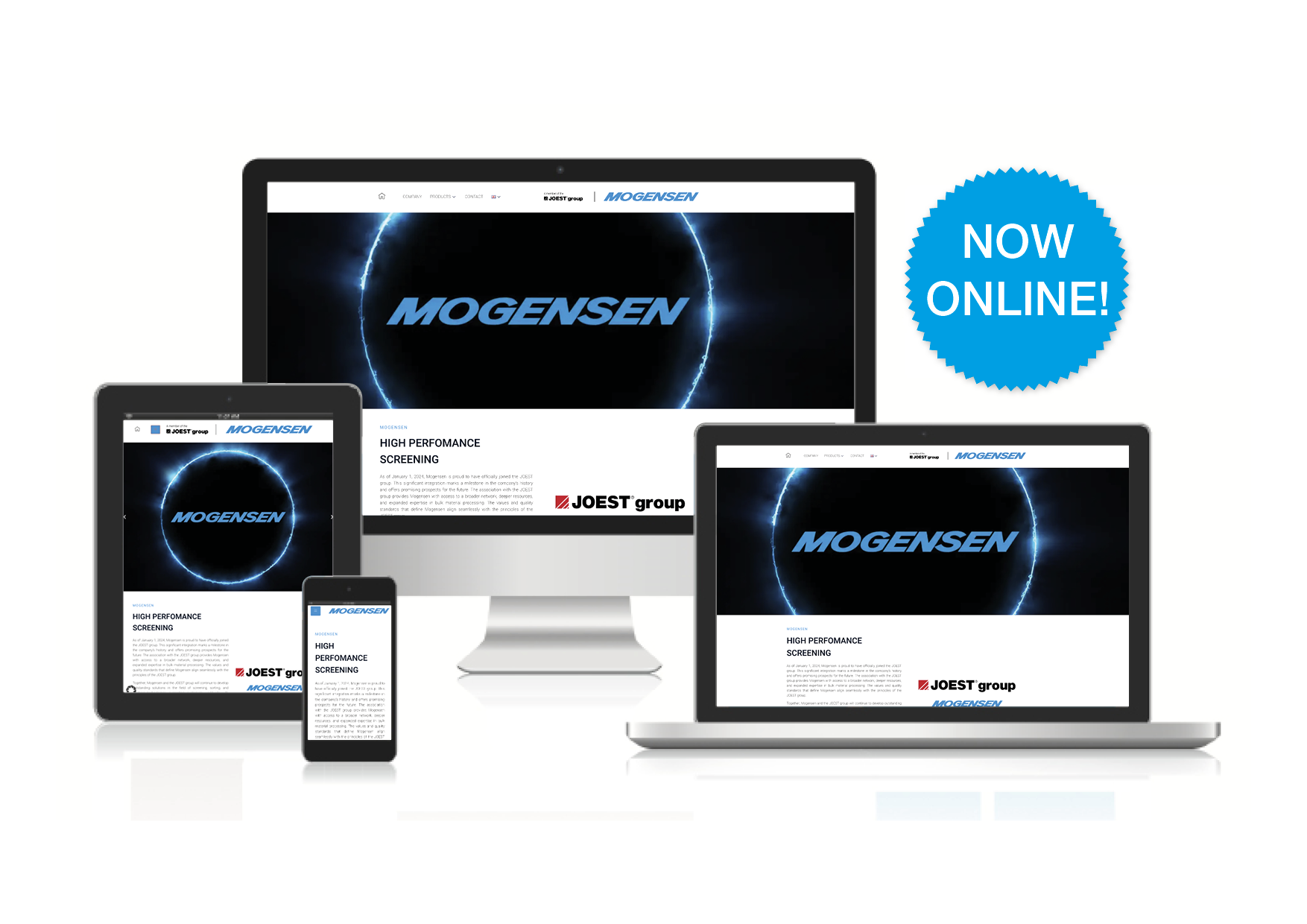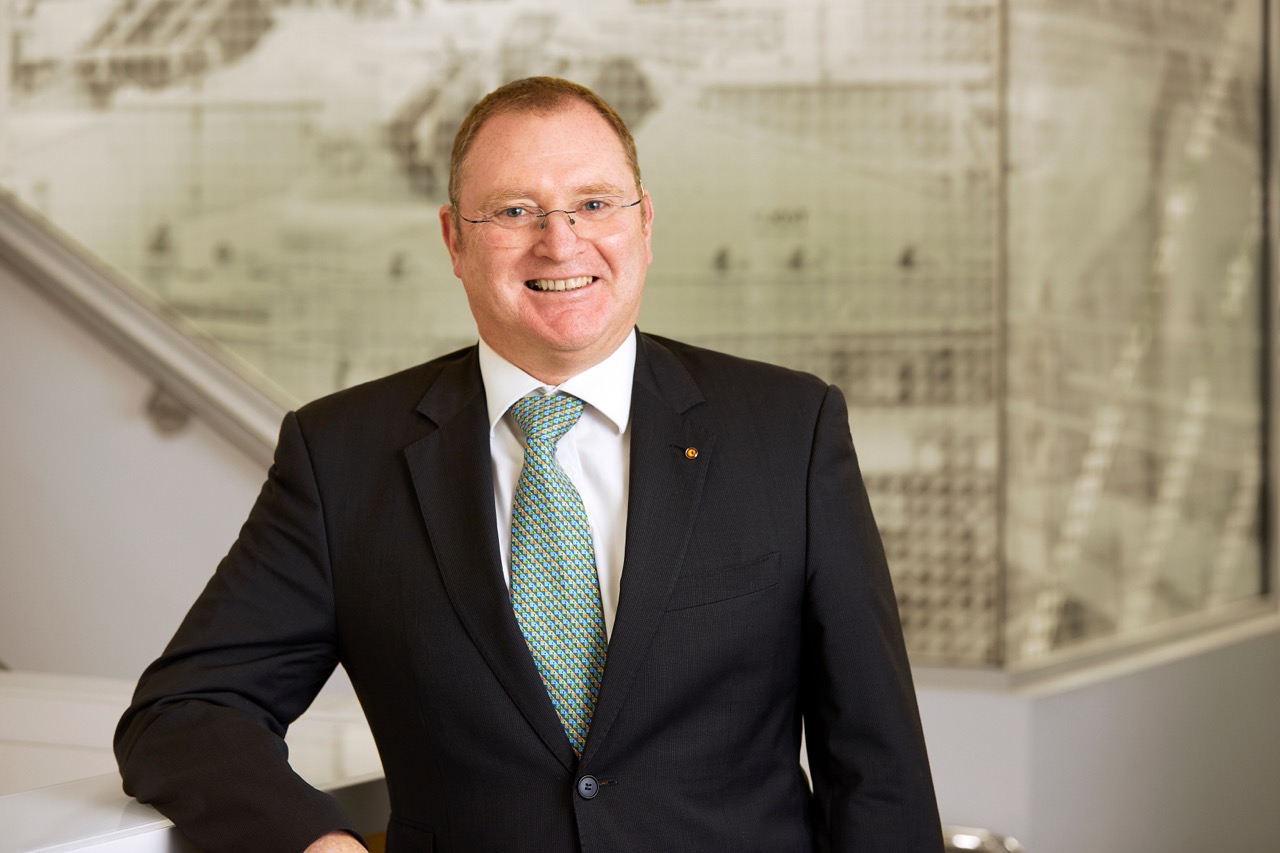HEADQUARTER
Successful, even in uncertain times
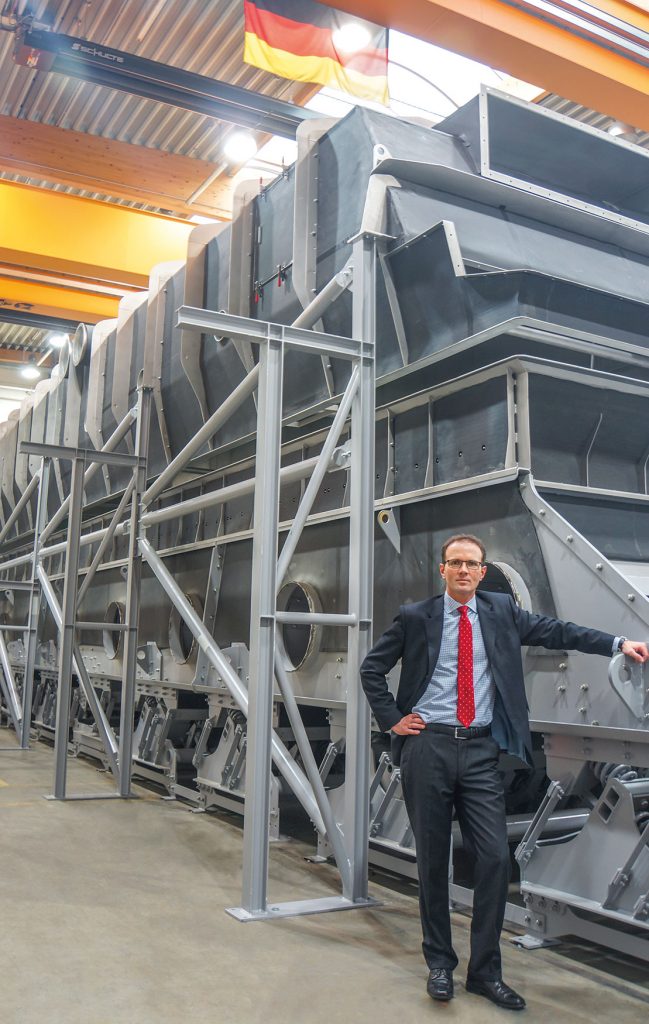
INTERVIEW. 100 years of JOEST next year – Interview with Managing Director, Dr. Marcus Wirtz
These are turbulent times – the Diesel emmission scandal, political shocks, e-mobility and Industry 4.0 challenge the foundries.
Nevertheless, JOEST continues to write its success story unabashed. Rising sales and employee figures show that the company is doing a lot right. JOEST can confidently look forward to its 100th anniversary next year. How did the company from Duelmen achieve this? GIESSEREI spoke to the JOEST Managing Director, Dr. Marcus Wirtz.
Your company is successful in the market and boasts increasing sales and employee figures. You obviously did a lot of things right. In your opinion, what was decisive for this development?
One of the key aspects of our success story is the history of the company. JOEST celebrates its 100th anniversary next year. We have remained true to ourselves throughout the years. We have been manufacturing vibratory machines for a long time, but have remained open-minded and have added additional technologies to our portfolio. We have developed these consistently and made it possible for the company to continue to grow in a generic and organic way with new applications and technologies. Today we offer everything the market asks for – from small individual machines to large solutions. We fulfill the wishes of many foundries with complete solutions. We have developed ourselves in line with the customers and their needs. Listening and counseling is essential – and of course experience.
What were the milestones in the development of JOEST? To steadily strengthen its growth, JOEST has made acquisitions that are optimally suited. In 1995, we acquired the Uhde-Schwingungstechnik. Herweg joined in 2002: In addition to the vibration technology, JOEST now also offers weighing technology and special solutions. The conveying in vacuum was made possible. In 2006, JOEST took over DIETERLE, a manufacturer of lifting and tipping equipment that transports, lifts, tilts, doses or decants bulk materials. DIETERLE GmbH & Co. KG merged with JÖST GmbH + Co. KG early 2018 and is no longer an independent company, but another strong JOEST group brand. In this way, we have expanded and supplemented our portfolio, and now offer an even wider range of products.
A company is only successful in a team. What is the role of your employees in the growth?
Naturally, our employees are central to our success. We attach great importance to employing primarily foundry engineers in our foundry division or employees from the foundry sector. Everyone carries the foundry DNA in themselves. This allows for a completely different access to customers. Furthermore, JOEST has a very good staff structure of older and younger employees, from experienced and talented employees. Today, having on-site contact is more important than ever in international business. We have a total of ten subsidiaries. At least one on each continent, where we also manufacture, have spare parts ready and employ engineers. A key success of the JOEST group lies in the successful internationalization strategy of the last 20 years. Now we are present in different countries and keep a close eye on what each country needs. This global presence also makes it possible to balance a weakening market with a stronger one.
How does success translate into numbers?
The success can be seen in the development of sales and employee figures. They rose by 10 to 15 percent respectively in the past three years. Today, JOEST has 365 employees in Germany – 15 more than a year and a half ago. Sales worldwide rose to more than 90 million euros.
Good numbers despite adversity – the Diesel emmission scandal also had an impact on the suppliers to the automotive industry. How did it impact JOEST?
Of course, the exhaust gas scandal has damaged the image of German mechanical engineering. At first there were irritations, projects were sometimes postponed. But there were reinvestments, the irritations are only insignificant. The scandal was so far not as significant as expected. We were able to balance the dent with other applications. Especially since the European foundries are becoming more and more international.
What impact do growing expectations for efficiency and sustainability have on your business?
We pay attention, for example, to efficiency in drive technology, which has always been one of our core competencies. An example: We have produced a large cast iron cooler – the largest vibrating machine in Europe – which is only powered by a 15 KW motor. We lower the energy consumption, even as the cast coolers get larger and larger. In addition, we at JOEST naturally optimize our own production processes and production halls. The conversion to state-of-the-art technology, such as LED lighting and cold-beam heating systems, significantly saves on energy.
How did you manage to meet the increasing demands?
In fact, the requirements are becoming more and more complex – but we enjoy tackling them. To do this, we develop new processes and optimize machines, controls and plant technology. This applies for example to the core sand crushing. In order to meet high requirements, we have also steadily increased our development staff. We also offer a dual degree program, which we are significantly expanding for the different areas. In addition, we are preparing ourselves as a strong training company for the future. We currently have 35 trainees – from the commercial sector to production. As customers increasingly demand a local presence, JOEST founded another new company in Korea in 2017. In China and Korea, there is a clear demand to produce locally, which we also live up to. We are well informed about different countries and we have a combination of local and international staff here.
Business units usually do not all develop at the same pace. Which product portfolio for foundries shows a particularly strong growth at your company?
What are the reasons?
A current trend is that due to increasing demand, several brake disk foundries are investing in box form plants with horizontal division in order to produce the castings with a structure which is point symmetrical to its axis of rotation. The configuration of the molding boxes is maximized; the performance of modern molding equipment is significant. This requires casting/sand separation plants in appropriate dimensions. In the production of engine blocks made of cast iron materials increasingly methods are used in which the casting has no direct contact with the wet casting sand, but rather is enclosed by an outer contour core structure to meet the accuracy and reproducibility, demanded by the required thin casting wall thicknesses of up to 2.5 mm. Such filigree castings require special unpacking procedures. This can not be managed with conventional separation channels. In the production of aluminum cylinder heads and several components for electric cars in gravity die casting, the cavities of the castings are mapped by built cores. For reasons of emission protection, increasingly inorganic binders are used for the production of these cores, replacing the traditional organic cold box process. It has been found, however, that the dust produced during the various post-coring process steps is significantly finer and partially respirable, i.e., penetrates into the alveoli. This considerably raises the demands placed on the plant technology with regard to dust-proofness and wear resistance. Since our concepts consistently reflect the indispensable feedback of customer experience, we have suitable solutions that meet these requirements.
Which markets may come to the fore?
We can see expansions in Mexico and Turkey. The automotive industry is growing, increasing the need for foundries. Especially since end users expect the foundry to be located nearby. In addition, there is an investment backlog in North America. Much of the production was shifted especially to China. Now a lot can come back. The political and financial problems and conflicts – recently in Turkey – as well as tweets from the US, however, can stop such developments overnight and lead to shifts to other countries. Therefore, our international presence is essential.
E-mobility is thus coming increasingly into the spotlight. How do you rate this market?
It will be a long time before there are no more combustion engines left. The demand for trucks is very high.
Truck transport is increasing enormously and e-mobility is less important here and will not represent a solution for the foreseeable future. I consider the goals of e-mobility announced by politicians in Germany to be unrealistic. But I have the impression that this will calm down and they will come to their senses, to more realistic assessments and time frames. (Including combustion engine). This includes hydrogen propulsion and the classic internal combustion engine in other regions, where these are constantly optimized. To meet future requirements for fleet consumption
The share of hybrid drives will rise significantly in the coming years. This requires about 25 to 30 percent more weight in castings. According to expert estimates, this trend will continue until at least 2035. If the share of pure electric vehicles increases gradually, the proportion of castings will decrease significantly, but many castings will be required for the charging infrastructure and the growing number of wind turbines.
Could markets develop differently? In China, North America – and Africa in the long term – the demand for engines is immense, and the distances to be covered are even greater. The internal combustion engines will continue to play their part in this. But one thing is clear: E-mobility is a trend, the share of E-mobility will continue to grow. There will be a mix: in the urban area rather electric motors and hybrid technology (with internal combustion engine). This includes hydrogen propulsion and the classic internal combustion engine in other regions, where these are constantly optimized. In order to meet future requirements for fleet consumption, the share of hybrid drives will increase significantly in the coming years. This requires about 25 to 30 percent more weight in castings. According to expert estimates, this trend will continue until at least 2035. If the share of pure electric vehicles increases gradually, the proportion of castings will decrease significantly, but many castings will be required for the charging infrastructure and the growing number of wind turbines.
Industry 4.0 is the future. How do you position yourself here?
Industry 4.0 is a special opportunity, we are working intensively with it. We have already developed some solutions: Thus, we provide a clear allocation of data on the castings, bring together numerous parameters and allow tracing of data. For example, the customer knows where things are. The goal is to detect mistakes earlier and avoid them. It’s all about reporting of faults, avoidance of failures and preventive maintenance. Our vision is that you can tell why a casting error occurred. All data – such as temperature, speed, humidity, inventory and noise level – should be merged. An important example: The controllers we develop should not just control. We already have intelligent controls – the platform is there, so the hardware is there. Now let’s see how we use them, so that these controls can unfold their full potential. For this purpose, the controllers are additionally equipped with intelligent software. We want to offer both: normal and intelligent controls.
Without innovations there is no further development of the company. With what strategy do you proceed here?
The field of research and development is essential for us. That is why we work together with various universities, for example with the Technical University of Aachen and the University of Applied Sciences of Münster, Steinfurt department. We award master’s and doctoral theses. Furthermore, I am a member of the board of the VDMA trade association
Metallurgy and Chairman of the Department of Mineral Processing. Here, global strategic issues are discussed.
What investments did you use to accelerate the development of your company?
We have been here in Dülmen since 1990 and have since been constantly expanding by investing in new plants and production capacities such as halls. The floor area increased from 40,000 to approximately 65,000 square meters. An example: Eight years ago, we built a completely new blasting and
painting plant using state-of-the-art technology. Since then we can perform all paint specifications up to the highest quality requirements in a flexible and timely manner. This is especially important when offering premium quality with short delivery times. On November 1, the new technical center went into operation. We built this even larger. Here we can run tests with customers for all solutions as well as machines and prototypes offered by JOEST. Over the past few years, we have invested a total of more than 10 million euros in our main site in Dülmen.
Are there plans for further investment in the next few years?
Yes, this includes, for example, the new machine technology of the flame cutting machine with integrated machining centers. We also employ welding robots to achieve productivity at a consistently high level of quality. As the world leader in vibration technology with manufacturing facilities on every continent, quality is our top priority, no matter where in the world customers buy from us. Therefore, we continue to focus on Germany and plan further expansions, especially for quality-critical parts and components.
Investments are important, but also require qualified employees. How do you deal with the shortage of skilled workers?
We must note that it is becoming more difficult to find trainees. This applies especially to the field of electrical engineering. Basically, we are working very actively to avoid a shortage of skilled workers. Thus, for example, we have a good network with associations and universities. And we can offer employees many benefits. We have very good transport connections. We are in close proximity to Münster as well as Duisburg, Dortmund and Dusseldorf – without having to renounce the advantages of inexpensive rural living. A great location advantage. The dual course of study that we offer is also very attractive. Young employees have many and good international opportunities for development. Out of consideration for the families, the fitters are still working in the factory. The employees assemble the machines here, but then accompany them to the construction site for final assembly. It is important for us not only to keep our employees, but to offer an attractive, motivating work environment with prospects. And this is confirmed by the fact that they want to stay here!
The interview was conducted by Michael Vehreschild, 4P Communications, Kleve. The article was published in 12/2018 issue of GIESSEREI professional journal.
Weitere Beiträge
Happy International Women’s Day!
Today, we want to give special thanks to all women! Our worker’s council, in collaboration with IG Metall, is bringing smiles to the faces of the women in the #JOESTeam with fresh colorful primroses!
For our long-standing customer, Dyckerhoff company, we have now exchanged JOEST tube type feeder at two star distributors for silo loading during the winter overhaul for the 4th year in a row, thus reaching the halfway point of the overall project.
Excited to finally announce the launch of our new website! Find out about our solutions in bulk material handling! Explore now and let’s elevate your efficiency together!
